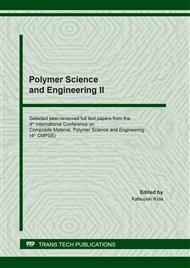[1]
K. Enami, S. Nenno and K. Shimizu, Crystal structure and internal twins of the Ni-36.8% Al martensite, Trans. JIM. 14 (1973)161-165.
DOI: 10.2320/matertrans1960.14.161
Google Scholar
[2]
J.L. Smialek and R. F. Hehemann, Transformation temperatures of matensite in beta Ni-Al alloys, Metall. Trans. A. 4 (1973) 1571-1575.
Google Scholar
[3]
P.L. Potapov, P. Ochin, J. Pons and D. Schryvers, Nanoscale inhomogeneities in melt-spun Ni-Al, Acta mater. 48(2000)3833-3845.
DOI: 10.1016/s1359-6454(00)00188-9
Google Scholar
[4]
T. Chráska, J. Lašek and P. Chráska, Resistometric investigation of phase transformations in NiAl alloys, Mater. Sci. Eng. A. 244 (1998)263-272.
DOI: 10.1016/s0921-5093(97)00647-3
Google Scholar
[5]
E.P. George, C.T. Liu, J.A. Horton, et al, Characterization, processing, and alloy design of Ni-Al-based shape memory alloys, Materials Characterization, 39 (1997) 665-686.
DOI: 10.1016/s1044-5803(97)00149-6
Google Scholar
[6]
M. Sanati, R.C. Albers and F.J. Pinski, ω-phase formation in NiAl and Ni2Al alloys, J. Phys.: Condens. Matter, 13 (2001),5387 -5398.
DOI: 10.1088/0953-8984/13/22/328
Google Scholar
[7]
D. Sengelhoff and U. Köster, On the peritectoid formation of Ni5Al3, Intermetallics, 5 (1997) 633-640.
DOI: 10.1016/s0966-9795(97)00044-7
Google Scholar
[8]
J.Q. Ma, C.L. Fan, Q.C. Sun, et al, Tribological behavior of NiAl-based intermetallic compounds in artificial seawater, Tribology International, 153(2021)106612 (1-11).
DOI: 10.1016/j.triboint.2020.106612
Google Scholar
[9]
Z. C. Zhou, Y. F. Yang, J. Du, S. Y. Gu, X. B. Zhu, Y. J. Yan and M. Sun, The Atomic Defect Relaxation Processes in the TiMo Alloys, Materials Transactions, 61 (2020)1051-1057.
DOI: 10.2320/matertrans.mt-m2019379
Google Scholar
[10]
Z. C. Zhou, Internal friction observation of the ε↔ γ transformation in a Fe-Mn alloy, Mater. Sci. Eng. A, 438-440 (2006) 336-338.
DOI: 10.1016/j.msea.2006.02.134
Google Scholar
[11]
T. B. Massalski, J. L. Murray, L. H. Bennett and H. Baker. Binary Alloy Phase Diagrams American Society for Metals, Metals Park, OH, (1986).
Google Scholar
[12]
J. Delorme and P Gobin. Review: phase transition. Metaux Corrosion-industrie, 573-574: 3-32 (1973).
Google Scholar
[13]
J.A. Horton, C.T. Liu and M. L. Santella, Microstructures and mechanical properties of Ni3Al alloyed with iron additions, Metall. Trans. A. 18A (1987) 1265-1277.
DOI: 10.1007/bf02647196
Google Scholar


